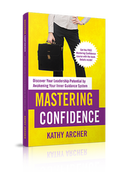The Inner Work of Leadership: Be Yourself and Lead with AuthenticityWomen leading nonprofit organizations know that leading with authenticity is at the core of effective leadership, or maybe they don't! In a world where we often feel the need to armour up, put on masks, and present facades, embracing our true selves can be terrifying and also a transformative experience. In my work, I teach four fundamentals of leadership. Let me cover them quickly here so you can create a plan to lead more effectively and feel good about yourself when you do! Nonprofit Leaders Discover The Power of Being True to Yourself1. Be YourselfI spent many years armouring up, putting on a face or feeling like there was a right way to lead. In Mastering Confidence: Discover Your Leadership Potential by Awakening Your Inner Guidance System. At times, I felt like I, figuratively and more often than not literally, suited up to go to work and then stripped away the layers when I got home. Sound familiar? But it's more than just the clothes we wear. It's the style, approach and manner we bring to our leadership. True leadership begins with authenticity. To be our best selves, we need to do the inner work of unmasking ourselves, shedding the armour, and embracing our genuine selves. That starts with identifying your values, beliefs, strengths and quirks and learning to be comfortable with all of them. That's the work of Being Yourself 2. Develop YourselfContinuous personal and professional development is the heartbeat of excellent leadership. Whether you're battling a lack of confidence or, quite frankly, don't know how to do 1-1 supervision, the journey of personal and professional development in leadership never truly ends. Strong and authentic leaders commit to ongoing personal and professional development. They have a plan for how they are growing and developing themselves on the inside and how they tactically do their day-to-day work. That's the work of Developing Yourself. 3. Take Care of YourselfLeadership isn't just about guiding others; it's about leading yourself first. Self-care plays a critical role in maintaining your composure, being able to focus, and being decisive. After all, you can't pour from an empty cup. Strong leaders develop practical strategies for ensuring their minds and bodies are well-equipped to handle the demands of leadership. That's the work of Taking Care of Yourself. 4. Teach Others to Do the SameTrue leaders empower those around them to embrace authenticity, continuous growth, and self-care. It starts with you, though. You can only teach it effectively if you do it. But when you do help others to unmask, develop, and care for themselves, it creates an engaged culture of loyal team members. Yes, we need to manage them, but inspiring leaders do more than that! Effective leaders learn to motivate, coach and mentor their team members. That's the work of Teaching Others to Do the Same. Learning to lead with excellenceIf you want to discover how to excel in leadership, explore how you can strengthen those fundamental strategies in how you lead. You'll learn more in the podcast series Invest in Your Leadership Excellence.
LISTEN NOW! Remember to subscribe on whichever channel is your favourite so you don't miss all 4 episodes in the series. Leading with authenticityRemember, leadership is not just a position, title or hat you put on when you show up at work each day. Leadership is a journey of self-discovery and growth. It is a personal growth journey! Embrace your authenticity, invest in your development, prioritize self-care, and lead with excellence and in a way that feels good! Do the inner work! It's worth it! p.s. If you want help doing the inner work so you can grow both personally and professionally, join The Training Library today! If you've been meaning to
NOW is the time to plan HOW you will do that 👆🏻 growth.
0 Comments
Understanding Pre-Meeting AnxietyIf you are a nonprofit leader and have a tough meeting coming up, you will want to feel empowered going into it. Tune into Sandra's story to build your confidence going into challenging conversations! Sandra's Story: Facing the Fear of a Tough MeetingWhen Sandra came to our coaching call, she was preparing for a meeting with the Executive Director about her performance. Sandra was dreading the meeting. She knew her boss would make her feel stupid, small and even scared.
But that's not how Sandra anticipated the meeting was really going to go down! Sandra knew she would feel attacked by her bossSandra knows that "help" from her boss is typically in the form of them pointing out:
Sandra's anxious thoughts were almost out of controlEver since Sandra's boss had scheduled the meeting, Sandra had been rolling around the worst-case scenario in her mind. She imagined being fired on the spot, being raked over the coals and being belittled, berated and bullied. Hence, the knot in her stomach! Sandra had a history of not feeling supported by her bossIt's no wonder Sandra was dreading the meeting! Past meetings had not gone well. Most of what Sandra feared had happened in the past.
It was time for Sandra to change her perspectiveJust because that is how Sandra's ED has communicated in the past does not mean that Sandra has to believe it means she is incompetent or not cut out for leadership. Sandra can choose to pick between the well-intentioned but still hurtful comments and find out what's valuable in between those comments. Sandra took back control of her thoughtsWhether it is this conversation with her boss or another, Sandra gets to decide how she will proactively continue to grow and develop in her nonprofit leadership role. Shifting Your Mindset for ConfidenceSandra enlists the support of her nonprofit coachSandra brought this upcoming conversation to our coaching call. In past coaching sessions, we'd already talked about mindsets, perspectives and lenses, so she knew her mindset mattered most! To plan to feel more confident in the upcoming conversation, we took a look at the kinds of messages Sandra's boss might share:
The Power of Perspective: Changing Your MindsetLeadership MINDSET # 1If Sandra chose to see herself as flawed, she would take these kinds of comments to heart. Imposter Syndrome would take over, and the knot in her stomach would grow to a tightening in her chest. Sandra could see how her thoughts could snowball:
Leadership MINDSET #2 (THE BETTER OPTION)I invited Sandra to PAUSE, and take a breath. I asked what might happen if she chose to hear the messages differently. Sandra PONDERed and considered the comments above and then what else might be true:
Mindset # 2 helps Sandra feel more confidentSandra then used curiosity to PIVOT to new thoughts:
Instead of feeling beaten down by taking time to move through the Inner Guidance Cycle, Sandra felt back in control. She was ready to take the core of the feedback (too much overtime) and hear it for what it is—Feedback. Believing in Your Potential: The Foundation of ConfidenceHow does this help Sandra remove the knot in her stomach before the meeting?By knowing she has control of her thoughts, choosing how to hear messages and intentionally choosing not to take things personally in the meeting but focus on the content, Sandra lessened the emotional charge going into the meeting. When Sandra chooses her thoughts, she feels her confidence soar!I reminded Sandra that feeling confident in a meeting isn't about what someone else says or thinks. Sandra smiled and nodded. She's been reading Mastering Confidence. I know, she said, it's what I believe. How confident you FEEL starts with what you BELIEVE.What you believe about yourself is what matters most. I asked Sandra:
I reminded Sandra that if she believes those things, the tone with which her boss shares those messages in that meeting is less relevant than the content and what she chooses to hear, believe and take action on. Creating an If/Then Plan for ComposurePreparing for Triggers: Sandra's If/Then StrategyWhile feeling more confident, Sandra was still worried about being triggered and losing composure in the meeting. Sandra wanted to prepare to stay composed in her talk with her ED. She'd recently reviewed the webinar: How to Prepare for a Tough Talk so you can handle it with integrity in The Training Library. She'd learned the power of being prepared for getting triggered with If/Then plans. She asked if I could help her prepare an If/Then plan in case she got triggered. Sandra already knew what kind of comments might trigger her and cause her to lose her composure.
We prepared her If/Then plan and she practiced saying her response.
Now, the knots have turned to butterfliesSandra was still nervous but felt way more confident and in control of her responses! She messaged me later and said the meeting was still hard, but she left feeling in control of herself, her responses and her future. What's Next? Taking Charge of Your Leadership JourneyWill you do what Sandra did? If you want to ditch the knot in your stomach before your next uncomfortable meeting, then you need to get ahold of your thoughts and emotions before you go into the meeting. You need to create a mindset that allows you to take back power, your personal power. That way, you will be able to respond in a way that makes you feel empowered, and you'll be able to handle your meeting more confidently, too! ❗️❗️VERY IMPORTANT NOTE❗️❗️
I am not condoning bullying or harassing behaviour. If that happens, you must decide how to address it, find mental health support, and/or change jobs. There is no one-size-fits-all plan for how you will deal with it. Just know that you have options if your workplace is not psychologically safe. Check your policy manual for direction on what to do within your organization. Online resources
You may also find these podcast episodes helpful. As a nonprofit leader, podcasts can be a fabulous asset to your growth and development. Do you listen to podcasts? I sure do. Podcasts are a great way to get updates, information, knowledge and often a good chuckle! I started my podcast, The Surviving to Thriving Podcast, in 2020. After 92 episodes, I took a summer break to rethink how to produce it best for you. I am working on a new 8-episode series to help you invest in your development. Stay tuned for a release date coming soon! Catch up on leadership podcasts from the Surviving to Thriving PodcastYou'll find the podcast here to catch up on the episodes. A few favourites of my clients and students are: Podcasts can be an integral part of your leadership developmentListening to podcasts can be valuable for personal and professional growth and leadership development. Below are five podcasts I regularly listen to and a favourite episode from each. You'll notice that not all the podcasts are related to leadership. Listening to podcasts not directly related to leadership can offer tons of benefits for you. Here's why you might listen to them: Why you need to listen to podcasts outside of the leadership genreYou might need to broaden your perspectiveMany challenges you face in leadership are complex and multifaceted. Exploring different topics and interests can expand your perspective, which is crucial for effective leadership. It helps you see the bigger picture and can provide fresh approaches to problem-solving. If you are working through a problem and hit the PONDER part of the Inner Guidance Cycle, listening to something not directly to leadership may open you up to seeing new perspectives. It could be time for a bit of stress relief and relaxation:Leaders often deal with a high level of responsibility. Podcasts unrelated to work can serve as a mental break, preventing burnout. Listening to podcasts about hobbies, mindfulness, or more fiction styles can help you unwind and reduce stress. Some say true crime podcasts do that for them. I am definitely not one of them! Investing time into listening to podcasts can be a powerful means of self-improvement, offering a wealth of insights, motivation, and support for your leadership journey. Some of my favourite podcasts episodesThe Science of HappinessRe: Thinking with Adam GrantDaring Greatly with Brene BrownHow We Live Now with Kathrine MayDachner Kelter on awe, humility and purpose
Dachner is also the host of The Science of Happiness podcast I listed above. Let me know which podcast you listen to and what you'd recommend for me. I'm always interested in expanding my podcast listening experience! p.s. Part of inner work is expanding what you put into your inner sphere. Podcasts are a great way to "Do the inner work!" Strong, confident and capable leaders are those who are continually learning and growing. Maybe you know that, but if you are like most women, you may be:
Let me tell you a little secret:
Before we get into low-cost ways to learn, let's review why it's so essential that you engage in training and take the time to develop yourself. You need to make growth mandatory Growth and development, your personal and professional development, are your paths to success in leadership and how you'll find your way to actually enjoying impactful leadership and life at the same time. Yes, striking that balance of impactful leadership and living a full life outside of work is possible. You must recognize that to do that, you must make learning and growing mandatory. Two reasons why training is critical for effective leadership.1 - You'll be stuck in old ways if you don't learn If you can't remember the last time you read a book, took a course that wasn't required training for the job, or spent a few minutes reflecting on your personal growth lately, you may feel frustrated with your experience of leadership. You feel crappy because you are stuck with only a few options, tools, or skill sets. As a result, you may be approaching problems with the same mindset and skillset you learned 10, 20 or 30 years ago. Those old ways will not keep you at the forefront of leadership or help you enjoy life. If you ever feel like you're on a hamster wheel, experiencing the same crises and dramas day after day, that might be because you've become stuck or trapped in the same spot. It's like swamp water that doesn't move, and it's why you feel icky. When your growth & development stagnates, you feel stuck. New training will give you new insights, fresh perspectives, and new tools and thus get you moving, flowing and smelling better. 2 - Your skill set is limited, and you know it If you are like many women leaders, you sometimes struggle with imposter syndrome. Instead of feeling competent, capable and confident, you feel:
To get out of imposter syndrome, you need the training to feel competent and thus confident! If you aren't getting the training you need, you keep feeling incapable, insecure and incompetent. Ongoing personal & professional development is your path to confidence. How to learn on a limited budget Perhaps your training budget is shot or nonexistent in your organization. Or maybe you don't want to ask for training money. What about paying for it yourself? Let's be honest, we all know your nonprofit income only stretches so far! Yet, we know strong, confident and capable leaders are those who are continually learning and growing. So, how do you do it with limited funds? Check out the options below. THREE FREE PLACES TO LEARN
3 FREE PLACES TO LEARN FROM ME
THREE LOW-COST PLACES TO LEARN
Remember, effective leaders, ️️️√ Focus on learning and growth. √ They are continually developing themselves. √ Keep the knowledge flowing through them and onto the people they serve. Ongoing personal & professional development is your path to confidence and effective leadership. If you've been meaning to
NOW is the time to plan HOW you will do that 👆🏻 growth.
Nonprofit Leaders Can Make Time for Personal & Professional DevelopmentEffective leaders need and want to grow themselves
As a woman leading in a non profit, I know you want to learn. You want to grow and develop yourself.
Leadership is synonymous with personal development
The best leaders know that they must grow, develop, change and adapt to what is going on. Strong leaders work to become their best selves, cultivate strong character and continue that always. To do that, you need time to work on yourself.
But we all know you're going from meeting to meeting to meeting. Between those meetings, you respond to texts and emails while you put out fires, deal with crises or tick off the boxes of things that absolutely need to be done. And that doesn't cover what happens when you get home! The most effective leaders create time for weekly personal and professional development
When would you find time to do this? How on Earth would you fit it into your busy day, either at work or at home?
It's true. To be your best self, you need to spend time learning, growing and developing. You need to discover new skills, learn new information and do the inner work to figure out how to assimilate that into your leadership and life. So, how do you find time to work on yourself? Below are three things you need to consider to help you shift your mindset and your time, so you can make time to grow yourself as a nonprofit leader. 3 Shifts to Help Nonprofit Leaders Make Time for Personal and Professional Development TrainingShift # 1 - Mindset Matters
Your mindset matters a lot! You need to think, believe, have an expectation, and understand that growth and development are not nice to haves but must-haves. You must also believe that you can grow.
Shift # 2 - Connect Your Learning to a Goal
Adopting a mindset that personal growth and development are part of leadership and creating the space to do that work is most effective when connected to your goals. As a leader, you need more than goals that your organization may or may not have set for you. You need your own goals that you have crafted to help you be your best self. The best leaders create the impact you desire at work and in your life.
In The Training Library, I encourage you toreview where you're at annually. From there, you create goals that you want to work on and draft a personalized learning curriculum. This learning curriculum will identify how and from what sources you will learn those things you need to learn or work on. From there, my students in The Training Library schedule time each quarter to see how they do on those goals. Then, monthly, weekly and daily, I encourage them to connect those goals to their daily activities. Creating this strategy and curriculum to work on yourself encourages you to create time to do it. It's not something random; it's a plan you are working on, and you can see the steps and feel the outcome. You need to create goals and a learning curriculum Shift # 3 - You can't find time, you must create time
You will never FIND time. You need to CREATE time. We spend most of our leadership and life reacting to things, and instead of reacting, we need to create our own experience of leadership. Part of this experience of leadership that you desire, if you've read this far, is the desire to grow and develop yourself. To do that, you need to create the time and space to grow and develop yourself.
We all have the same 24 hours in a day. What we choose to do with those 24 hours makes the difference for each of us. You have to prioritize in some tiny way growth and development. The time doesn't have to be perfect
We often think it has to be the perfect time with the right pretty journal and candle lit beside us. Nope.
It doesn't have to be a big chunk of time
You don't need a full hour to do personal development work. A few minutes here or there will keep you moving forward. Certainly, you'll want more substantial chunks of time to do some of the work. But you can also do parts of it in smaller segments.
You may need to be creative
This goes back to the perfect time idea. We often have a vision of what reading or journaling looks like. Don't think it has to be that way.
3 places to create time to do the inner work of leadership1) Make use of existing downtime
The best example is all of the times in your life when you are waiting! For example:
2) Look at current time wasters/time fillers
Consider changing what you do during some of these times:
3) Carve out time
Make time for 15 minutes of learning 4 times a week in these spots (That's a whole hour eacweek!!)
Tada....YOU just CREATED a whole hour each week to work on developing yourself! WHOOOOO HOOOOO!!!! Remember, personal and professional development is your path to success in leadership and life! Do this right now to make time to grow yourself as a nonprofit leader
If you've been meaning to
NOW is the time to plan HOW you will do that growth. If you need a place to start,The Training Library may be a good resource for you. |

Available on Amazon
Archives
May 2024
|
|
Leadership TRAINING for Nonprofit Leaders
Become a confident and competent nonprofit Leader: Join The Training Library membership Executive and Leadership COACHING Leadership Coaching for Nonprofit Executives, Leaders and ManagerCoaching |
PODCAST for Nonprofit Leaders
The Surviving to Thriving podcast: Strategies, systems and support to lead your nonprofit with confidence FREE RESOURCES to Grow your Leadership Skills Free Leadership Training Resources, Worksheets and Templates |
Become a CONFIDENT LEADER
|

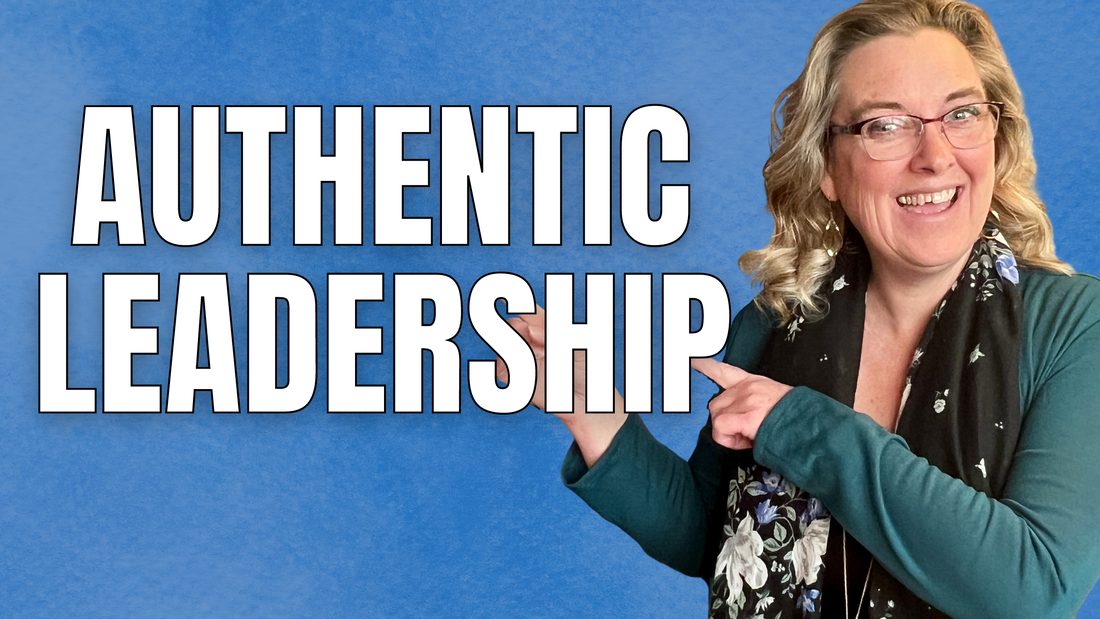



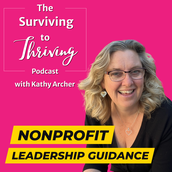
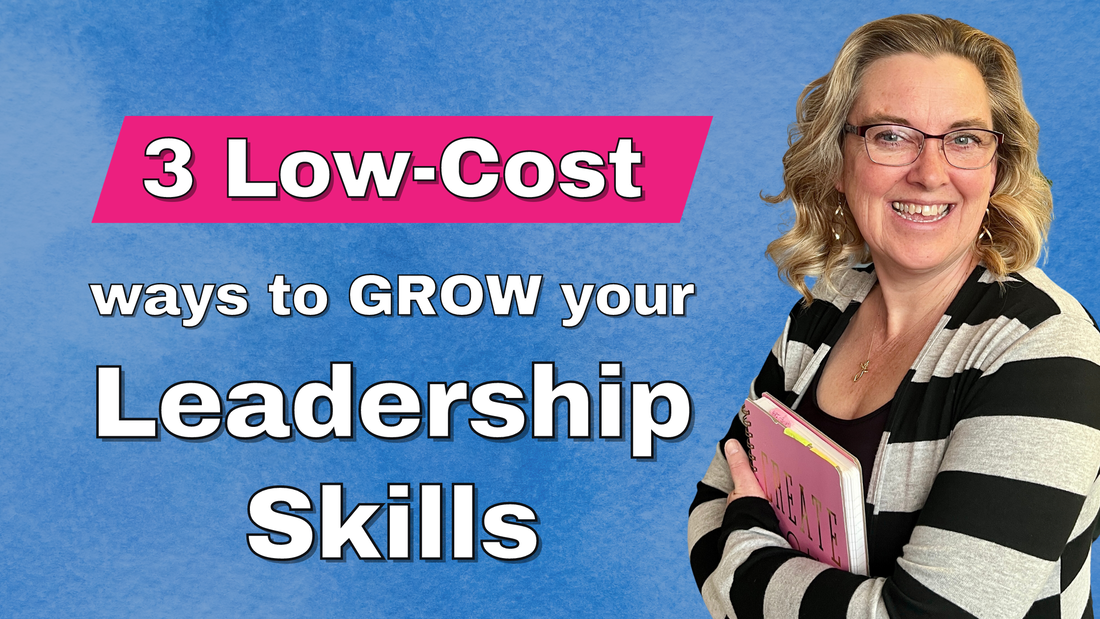
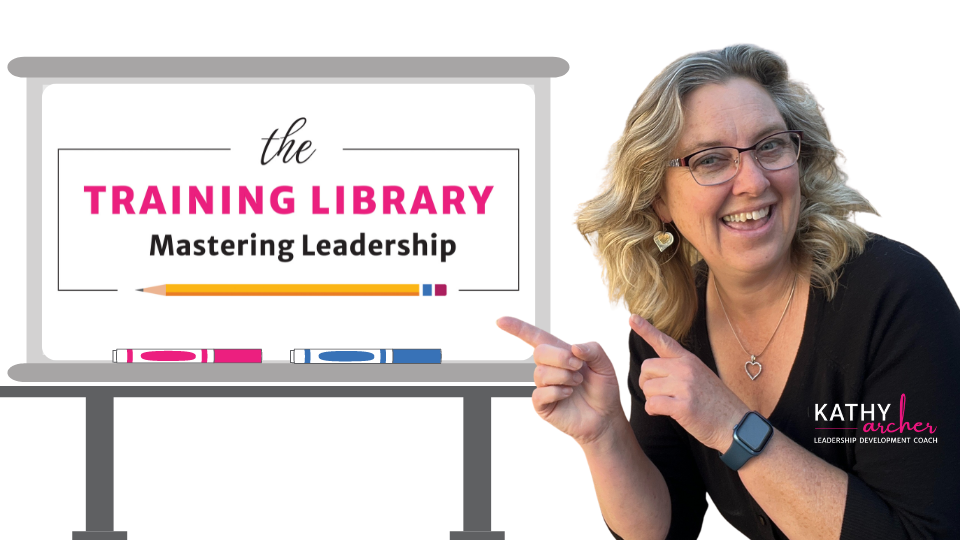
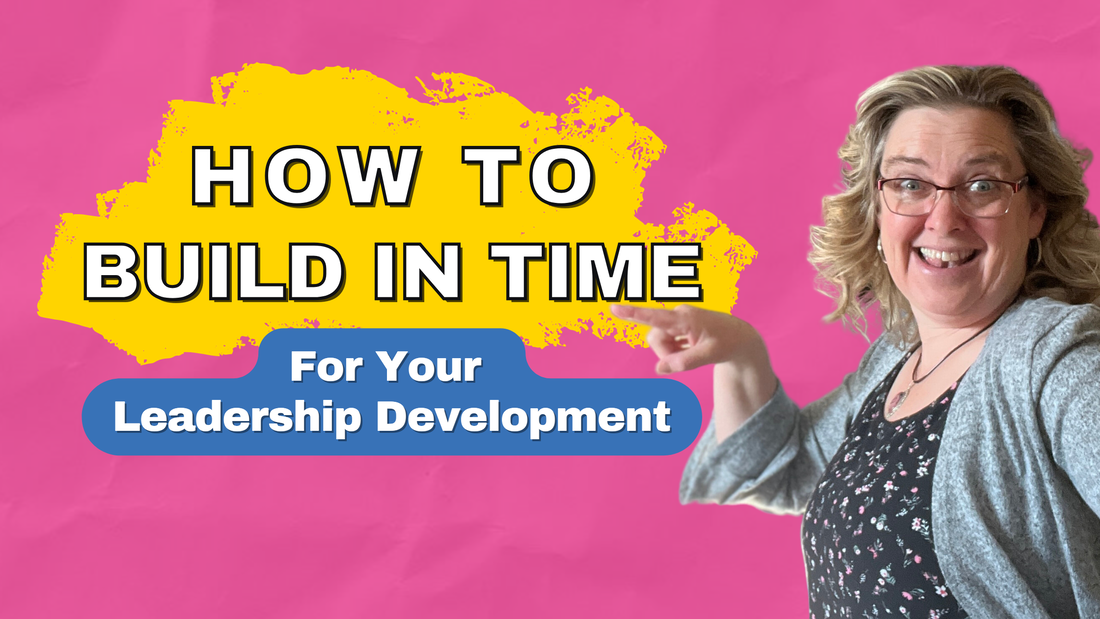


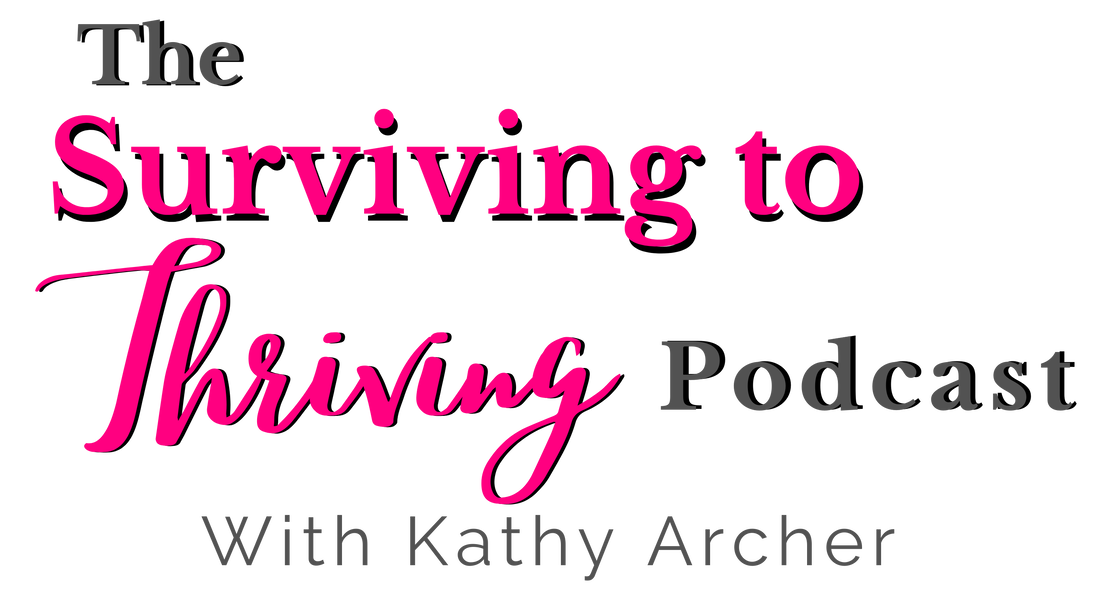
 RSS Feed
RSS Feed
